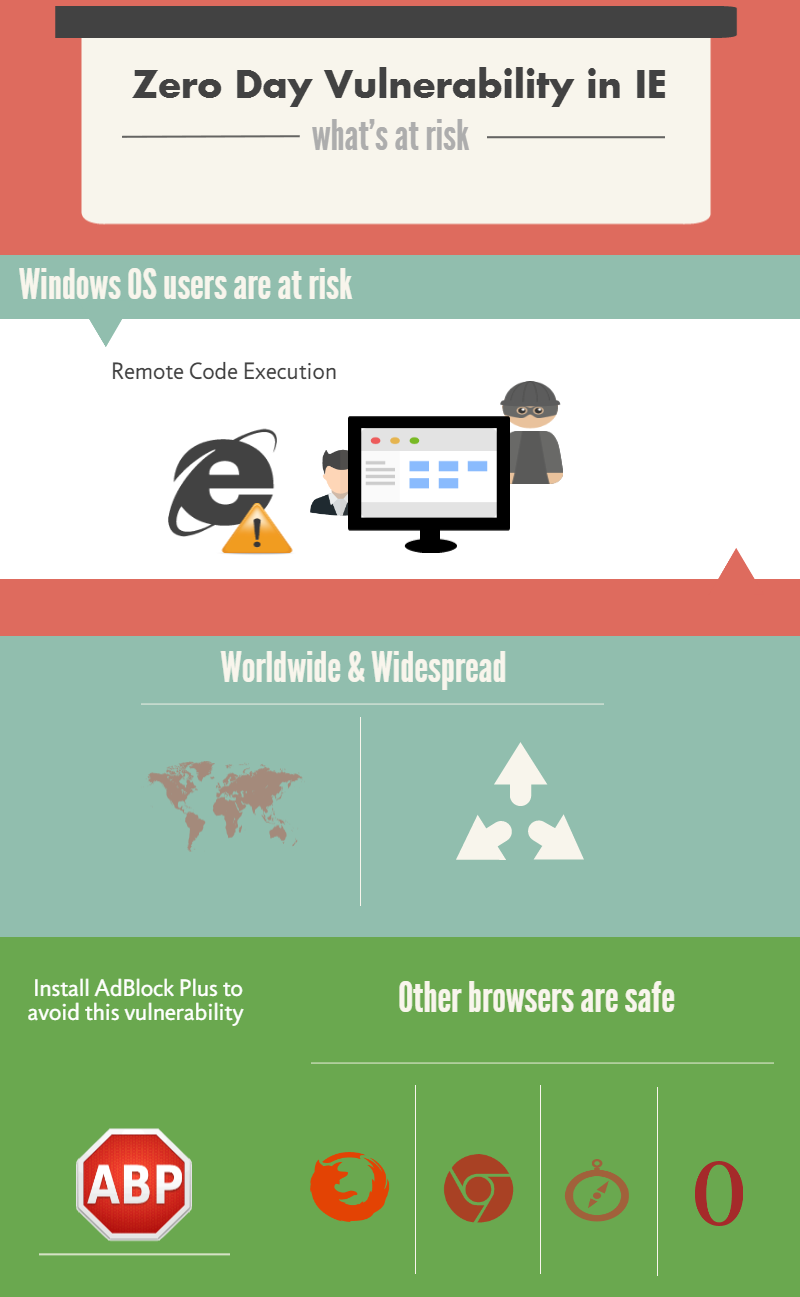“Zero day” vulnerability in IE – what’s at risk
You may have seen recent alerts about the “Zero Day” vulnerability in Internet Explorer. As part of our work as a secure hosting provider, we wanted to share some quick points about the threat:
Windows OS users are at risk
Zero day vulnerability allows “remote code execution” – it’s super easy for a hacker to view your Windows OS files or install viruses on your PC via Internet Explorer (and you won’t know it’s happening).
It’s worldwide & widespread
Zero Day affects every version of Internet Explorer currently on the market, from IE 6 upwards.
Other browsers are safe
Firefox, Chrome, Safari and Opera are unaffected – unlike IE, Microsoft won’t let these browsers access Windows OS while you’re surfing the web.
To limit zero day vulnerability impact following actions can help
- Install EMET to protect your PC. As tested by Fireeye, EMET 4.1 and 5 do help to break the exploit.
- This IE vulnerability can use Flash to exploit and bypass some protection techniques from newer version of windows/IE. We strongly recommend to Disable Flash which supports IE 10 and later in windows 8. (Note that you can disable flash as its enabled by default)
- Enable the IE “Enhanced Protection Mode” (EPM) which became available in Internet Explorer 10 and later versions.
- We recommend switching to Firefox and installing Adblock Plus to avoid this vulnerability.
Summary

Was this information helpful? If so, we’d like to invite you to:
- Sign up for our free email alerts
- Or connect with us on Twitter
You’ll receive regular updates on the latest security threats, plus in-depth tips on email and website marketing.

Recent Comments